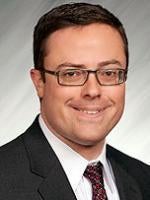Pollution exclusions in modern commercial general liability (CGL) policies make it difficult, and often impossible, to recover the costs of environmental cleanups from a general liability insurer. For contamination that stretches back to the 1970s and 1980s, however, CGL coverage may still be available to pay for environmental cleanups arising from “sudden and accidental” polluting events.
This is because the typical pollution exclusion during that time contained an exception for “sudden and accidental” pollutant discharges. Although this exception was phased out of most CGL policies by 1986, the long-term nature of environmental liabilities means that those older policies may still be in play today. Indeed, there is ongoing litigation, decades after this phrase fell out of use, about what a policyholder needs to show to prove that a discharge was “sudden and accidental” to avoid the exclusion and obtain coverage for cleanups.
Proving a “sudden and accidental” discharge can be challenging, especially for discharges that happened decades ago. In some cases, testimonial evidence is still available. For example, a former employee may recall and testify to a drum puncture, a fire, a flood, or some other sudden event that caused a release of hazardous substances in years past.
In the absence of such evidence, however, policyholders sometimes rely on experts to opine that, based on factors such as the location, size, or concentration of the contaminant plume, the discharge likely was “sudden and accidental.”
A recent case in the Seventh Circuit Court of Appeals, Varlen Corp. v. Liberty Mutual Ins. Co., illustrates the challenges policyholders face in proffering admissible expert testimony to prove a “sudden and accidental” discharge.
In Varlen, there were three contaminant plumes that the expert opined were caused by “sudden and accidental” discharges. The expert opined that:
- A plume of hexavalent chromium near a sump was caused by leaks that occurred “in sudden spurts,” based on his experience working with sumps.
- A chlorinated solvent plume was “indicative of a drum overturning and suddenly leaking out,” based on the fact the contamination was found where the solvent was stored, not where it was used.
- A diesel fuel plume near a refueling tank was too large to have occurred by minor leakage, and was more consistent with large-scale overfills involving tens or hundreds of gallons being discharged at once.
The Seventh Circuit held the district court did not abuse its discretion in excluding the expert’s testimony, because it was not based on reliable methods under Federal Rule of Evidence 702. The expert failed “to show how his experience or expertise led to his conclusions,” and offered no methodology to support those conclusions. In short, the expert “failed to demonstrate that his conclusions were anything more than guesses.”
Notably, however, the court did not reject this type of expert evidence per se. Rather, it held that this particular expert failed to sufficiently describe and justify his methodology.
The takeaway for policyholders and practitioners is that expert testimony may be useful to prove a “sudden and accidental” discharge to avoid the pollution exclusion, but only if the expert “shows their work,” and employs a methodology beyond simply drawing inferences from the size, concentration, or location of the contaminant plume.




 />i
/>i
